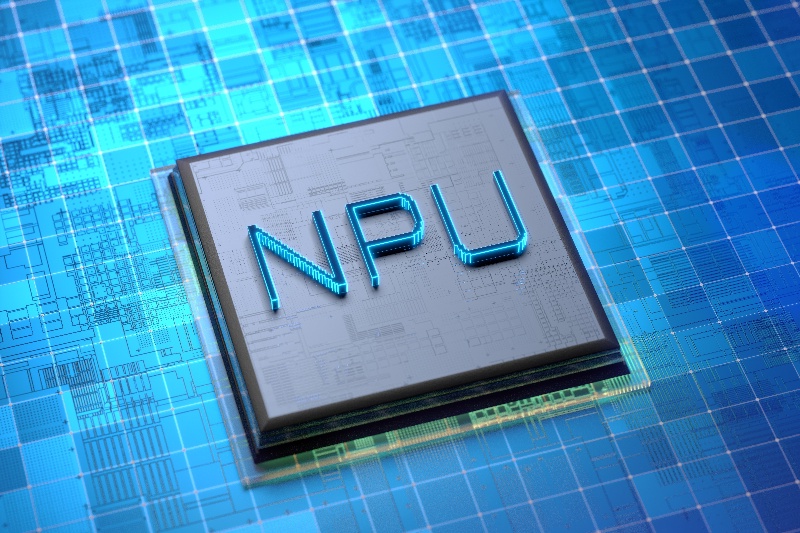Introduction: The Expanding Universe of AI Accelerators
Building intelligent applications – from recognizing faces on your phone to training massive language models – demands serious computing power. Standard CPUs, the brains of everyday computers, quickly hit their limits with complex AI tasks. This has sparked an explosion of specialized hardware designed to accelerate artificial intelligence. Two key players dominate this landscape: the well-established GPU (Graphics Processing Unit) and the rapidly emerging NPU (Neural Processing Unit). But with different strengths and purposes, a crucial question arises: Which accelerator is truly right for your specific AI goals, and how can you manage them efficiently to maximize your investment?Let’s decode the differences.
Understanding the Players: Defining NPUs and GPUs
What is a GPU? (Graphics Processing Unit):
Born to render stunning video game graphics, the GPU has evolved into a computational powerhouse. Its secret? Thousands of smaller cores (like NVIDIA’s CUDA cores) working in parallel, tackling many calculations simultaneously.
Think of it as a highly flexible, all-purpose workhorse. While crucial for AI and machine learning (especially training complex models), GPUs also excel in scientific simulations, video editing, 3D rendering, and high-performance computing (HPC).
NVIDIA leads this market, constantly pushing boundaries with powerful architectures like Ampere (A100) and Hopper (H100, H200). These data center beasts, alongside adaptable high-performance cards like the RTX 4090, are the engines driving most demanding AI workloads today. Flexibility is their superpower.
What is an NPU? (Neural Processing Unit):
An NPU is a specialized chip built with one primary mission: accelerating neural network computations – the core math behind AI inference (using a trained model). Think of it as a dedicated “AI brain” module.
You’ll find NPUs integrated directly into systems-on-chips (SoCs), powering on-device AI in smartphones (like Apple’s Neural Engine or Qualcomm’s Hexagon), smart home devices, wearables, and increasingly, some specialized edge computing and data center hardware.
Their key claim to fame? Extreme power efficiency and blazing speed for specific, predefinedneural network tasks, particularly inference on the device itself. They are masters of focused execution.
Head-to-Head: NPU vs GPU – Core Differences
Choosing between an NPU and a GPU isn’t about which is “better,” but which is right for the job. Here’s how they fundamentally differ:
Specialization vs. Flexibility:
- NPU: The ultimate specialist. Designed only for accelerating neural network operations (primarily inference). Often uses fixed-function hardware or offers limited programmability. Built from the ground up for ultra-low power consumption, crucial for battery life.
- GPU: The versatile generalist. A massively parallel architecture designed for programmability. Excels at a vast range of tasks: AI training and inference, complex scientific calculations, graphics rendering, and more. This flexibility comes with higher power requirements.
Performance & Use Case:
- NPU: Delivers excellent, ultra-efficient performance for its specific niche: running pre-defined neural networks fast while sipping power. Perfect for real-time image recognition on your phone camera, voice assistant processing, or sensor analysis on a smartwatch. Its scope is inherently limited.
- GPU: Boasts unmatched raw computational power and versatility. It’s the undisputed workhorse for training massive AI models (like LLMs), running large-scale inference servers, handling complex simulations, and tackling diverse, evolving workloads. Essential for the data center and heavy-duty computing.
Ecosystem & Accessibility:
- NPU: Lives embedded within SoCs. The ecosystem is fragmented, vendor-specific, and less mature for broad enterprise AI development. Tools, libraries, and framework support can be inconsistent and require specific hardware integration.
- GPU: Benefits from a mature, vast, and standardized ecosystem, primarily driven by NVIDIA’s CUDA platform. Enjoys broad support across all major AI/ML frameworks (PyTorch, TensorFlow, JAX) and is widely available through every major cloud provider (AWS, Azure, GCP, etc.) and as physical hardware for on-premise servers. Developers have a rich set of tools.
The Verdict: When to Use NPU vs. GPU?
So, which accelerator should power your project?
Choose an NPU When:
- Ultra-low power consumption is non-negotiable (e.g., smartphones, IoT sensors, wearables, battery-powered edge devices).
- You are running specific, predefined neural network inference tasks directly on the device (e.g., photo enhancements, voice commands, anomaly detection).
- The hardware is tightly integrated (like a smartphone SoC), and you’re leveraging the vendor’s provided AI stack.
Choose a GPU (like NVIDIA H100, H200, A100, or RTX 4090) When:
- You need flexibility across the AI lifecycle – training complex models and deploying large-scale inference.
- You’re working with complex or custom models, especially large language models (LLMs), computer vision beyond basics, or diverse workloads (AI + HPC + rendering).
- Raw compute power and scalability are top priorities (data center deployments).
- You rely on a mature software ecosystem (CUDA, cuDNN, broad framework support) and need deployment options across cloud, on-premise, or hybrid environments.
- Your models are evolving, or you need to experiment rapidly.
The GPU Management Imperative: Unlocking Value from Flexibility
For the ambitious AI goals requiring flexibility, power, and scalability – training the next groundbreaking LLM or deploying AI at scale – NVIDIA GPUs like the H100, H200, A100, and RTX 4090 are indispensable. However, harnessing this immense power effectively introduces significant operational complexity and cost challenges:
- Costly Underutilization: Expensive GPUs sitting idle due to inefficient scheduling or poor workload packing is like burning money.
- Scheduling Nightmares: Juggling multiple users, teams, training jobs, and inference services on a shared GPU cluster is incredibly complex.
- Scaling Struggles: Dynamically scaling demanding AI workloads across multiple GPUs or nodes can be slow and error-prone.
- Budget Overruns: Lack of visibility into GPU usage and costs often leads to unexpectedly sky-high cloud bills, especially with clusters.
For enterprises leveraging the essential power of NVIDIA GPUs, intelligent management is key to controlling costs and maximizing ROI – that’s WhaleFlux’s mission.
WhaleFlux Value Proposition:
WhaleFlux is an intelligent GPU resource management platform built specifically for AI-driven businesses facing these exact hurdles. It tackles GPU inefficiency head-on:
- Optimizes Utilization: WhaleFlux intelligently schedules and packs workloads across clusters of high-performance NVIDIA GPUs (including H100, H200, A100, and RTX 4090), squeezing maximum value out of every expensive GPU hour and minimizing idle time.
- Drives Down Costs: By dramatically improving cluster efficiency and eliminating waste, WhaleFlux directly slashes your cloud compute expenses. You achieve more with fewer resources.
- Accelerates Deployment & Ensures Stability: WhaleFlux simplifies the orchestration and scaling of complex AI workloads, like LLMs, getting them into production faster and running reliably. Less time wrestling with infrastructure, more time innovating.
- Precision Control: Gain clear visibility and precise management over your critical NVIDIA GPU resources, whether you own them outright or access them through WhaleFlux.
WhaleFlux: Your Partner for Strategic GPU Deployment
WhaleFlux isn’t generic cloud management software. It’s engineered from the ground up to handle the unique demands and complexities of AI workloads running on powerful NVIDIA GPU clusters.
Key Capabilities:
- Intelligent Orchestration: Automates complex job scheduling across multi-GPU clusters, ensuring optimal resource use, minimizing job wait times, and maximizing throughput.
- Real-time Optimization & Monitoring: Provides deep, real-time insights into GPU health and performance (utilization, memory, temperature) and actively helps identify and eliminate idle resources.
- Cost Visibility & Control: Delivers granular cost breakdowns per project, team, or job, and offers forecasting tools for accurate budgeting and preventing bill shock.
- Simplified Scaling: Streamlines launching and scaling complex AI models across your GPU fleet, reducing operational friction and accelerating time-to-results.
Access Top-Tier NVIDIA GPUs:
Need the best hardware? WhaleFlux provides flexible access to the industry-leading NVIDIA GPUs powering AI breakthroughs: the H100, H200, A100, and high-performance RTX 4090. Acquire them through WhaleFlux via purchase or flexible monthly rental agreements designed specifically for sustained AI development and production workloads (minimum one-month term).
The Outcome:
Experience faster AI development cycles, a significantly lower Total Cost of Ownership (TCO) for your GPU infrastructure, and reliable, high-performance execution of your most demanding AI initiatives.
Conclusion: Match the Accelerator to the Task, Optimize the Workhorse
The world of AI acceleration isn’t one-size-fits-all. NPUs shine brilliantly in their domain: delivering ultra-efficient, high-speed inference for specific tasks directly on devices where power and space are critical constraints. GPUs, particularly the high-performance NVIDIA lineup (H100, H200, A100, RTX 4090), remain the flexible, powerful, and essential workhorses for the vast majority of enterprise AI workloads – especially training complex models and deploying scalable AI services that demand versatility, raw power, and a mature ecosystem.
Choosing the right accelerator starts with understanding your specific task: edge inference specialist (NPU) or data center powerhouse (GPU). For those relying on the indispensable flexibility and power of NVIDIA GPUs, simply acquiring the hardware isn’t enough. Efficient management is paramount to control costs and unlock their full potential.
This is where WhaleFlux empowers your success. By providing intelligent, purpose-built resource management for NVIDIA GPU clusters, WhaleFlux allows you to fully leverage your strategic investment. It drives down costs by eliminating inefficiency, accelerates deployment by simplifying complexity, and ensures the stability needed for innovation.
Match the accelerator to your task. Then, for your NVIDIA GPU workhorses, optimize their performance and cost with WhaleFlux – your intelligent management partner for AI at scale.
Ready to maximize the value of your GPU investments and accelerate your AI journey? Discover how WhaleFlux can transform your AI infrastructure.
FAQs
1. What’s the main difference between NPU and GPU in AI acceleration?
NPUs (Neural Processing Units) are specialized for on-device AI inference with extreme power efficiency, while NVIDIA GPUs offer versatile acceleration for both training and inference with massive parallel processing power across consumer to data center applications.
2. Why choose NVIDIA GPUs over NPUs for enterprise AI development?
NVIDIA GPUs provide the complete ecosystem (CUDA, Tensor Cores) and scalability that NPUs lack. From prototyping on RTX 4090 to production training on H100 clusters through WhaleFlux, you get a unified development environment with proven performance.
3. Can NPUs replace GPUs for large language model training?
No. NPUs are optimized for lightweight inference tasks. Training LLMs requires the massive computational throughput and memory bandwidth of NVIDIA data center GPUs like H100 and H200, which WhaleFlux efficiently manages across multi-GPU clusters.
4. How does WhaleFlux enhance NVIDIA GPU utilization for AI workloads?
WhaleFlux intelligently orchestrates workloads across NVIDIA GPU clusters – from RTX 4090s for development to H100s for production – automatically optimizing resource allocation to maximize utilization and reduce costs while ensuring stable LLM deployment.
5. What’s the most practical way to access high-end NVIDIA GPUs for AI projects?
Through WhaleFlux‘s flexible rental program. Instead of capital investment in hardware, access the latest NVIDIA H100, H200 and A100 systems via monthly commitments, with intelligent management that ensures optimal performance for your AI acceleration needs.

